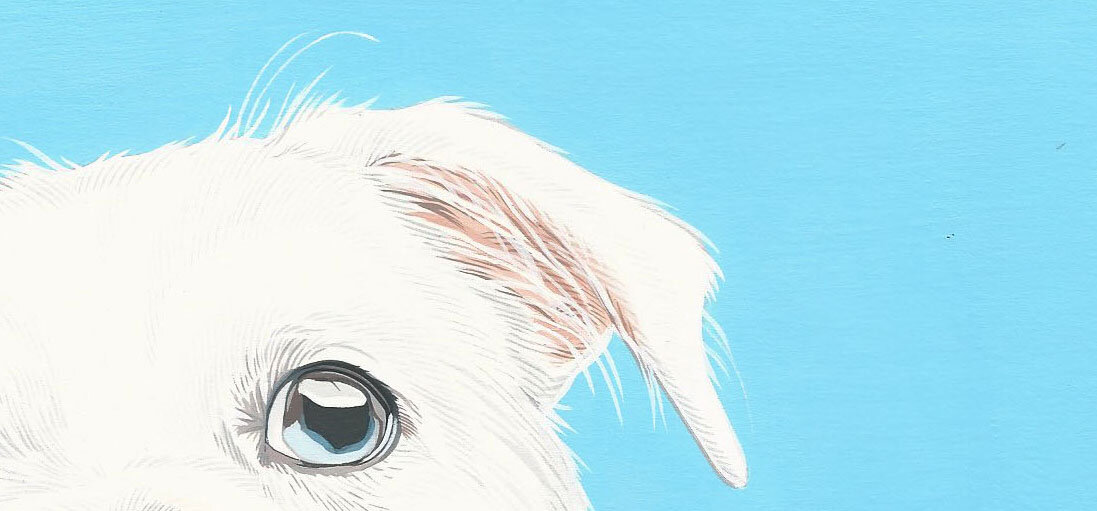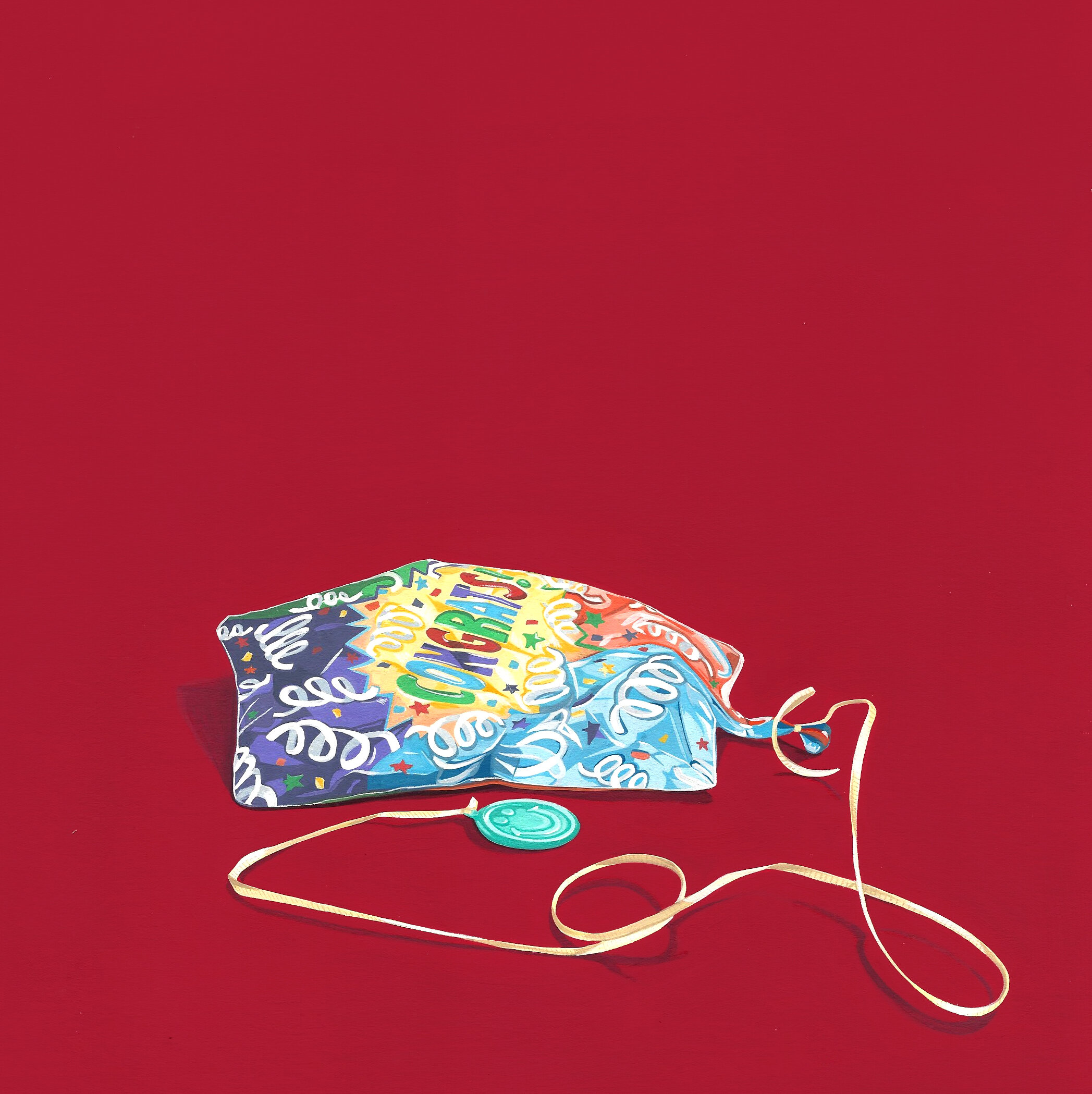You finally bought your paint and you’re ready to go. Now what? How do you actually use gouache?
Never fear! I’m here to go over gouache basics. Let’s call it Gouache 101. I’ll cover how to mix gouache paint and the ideal consistency to achieve the best results, two things I get a lot of questions about.
Mixing 101
Most gouache is heavily pigmented, meaning that a little goes a long way. I’ve seen beginners empty an entire tube of color for one project, and I’m here to tell you that you do not want to do that. A small dollop should be more than sufficient, especially if you’ll be adding white (which we’ll be talking about next). The only time I recommend making more paint than you might need is if and when you’re preparing to cover a large flat section, like a background. In this case, you'll want to make sure you have enough paint to cover the area plus some extra in case an adjustment needs to be made. If you end up with leftover paint it’s easy enough to store and you can always incorporate it into another project!
The color you’ll use the most when mixing up your paint is white (I’ve heard that it’s similar to mixing acrylic paint). White helps increase opacity and stretches your colors. What I mean by ‘stretching’ your colors is that you won’t have to use as much of your tinted paint. Adding white shouldn’t dramatically decrease color saturation, but it does increase the amount of paint you have to work with. Because gouache becomes more opaque when white is added, you won’t have to paint on extra layers for coverage.
There are varying opinions about which whites should be used for mixing vs highlighting, how they affect color, etc. and I’m going to start off by saying: I use them all at different times for different purposes! It depends on what my end goal is and I’ve mostly found what works for me by trial and error.
I think it’s important to figure out what works best for you and your practice by playing with options and using whichever one you end up loving. There’s a good chance you’ll end up like me and love them all for different reasons.
Choosing your White
A lot of artists recommend using Zinc white for mixing. It’s the most lightfast white and it only subtly changes color saturation, if at all. It’s also the least opaque of all the whites, which is something to be aware of when choosing it for a base. Lastly, Zinc is also a warmer white. This is not the best choice for highlights.
A more opaque white is permanent white. Some people balk at the idea of using permanent white for mixing because they argue that it does too much to desaturate colors and gives them a slightly gray tinge. I’ve used both, and I actually prefer permanent white over zinc white. Personally, I don’t think permanent white desaturates color to the extent that other artists claim it does. To each their own, though!
Permanent white is a cooler white. It’s the one you want to use for highlights because of its high opacity.
I used permanent white to add these little hairs in. Notice how opaque they are against the bright blue background!
General Rules for Mixing
When mixing a color you want to slightly alter, start with your tinted color as the base and add in small amounts of white until you achieve the hue you want. (In general, this is good practice when mixing up any variation of a color.) However, if you want to make a lighter variation of a color, such as pastel, start with white as your base and add your tinted color slowly. This is going to help ensure that you’re not needlessly wasting paint trying to get a certain color. Having to add a ton of white or a ton of tint to get a hue can be easily avoided if you follow this advice.
With gouache, your lighter colors always dry darker, and your darker colors dry lighter. It’s worth making a color swatch on a nearby piece of paper to make sure that the dried color works for you. If not, you can always continue to alter it and make swatches until it’s perfect. Side note: Don’t be discouraged if mixing the perfect color takes a while. It literally happens to all of us!
Black isn't always just ‘black’ and each shade will have a different color base. For example, Lamp black is cooler and becomes gray if white is added and Ivory black is warmer and has hints of brown strewn throughout it. If you’re trying to make a color darker, start with your color and add in your black a little at a time. Blacks are highly effective in darkening a color with just a little bit of paint! Adding a little at a time will help make sure your color doesn't get too dark, too fast. Again, we’re trying to minimize waste and maximize results!
Some gouache colors are more transparent than others. I’ve found that a lot of reds and purples can be a pain to work with. They’re always a little too sheen and they fade quicker than other colors. They’re considered unstable pigments, so I would try to avoid using them as a base color. They work great as an accent though! For these hues, especially red, I tend to use Acryla gouache if I’m covering a large area. In general, Acryla is more reliably opaque and creates fewer streaks. For small areas, I’ll make a judgment as I’m painting. Sometimes I’ll decide to go for it with regular gouache and sometimes I pull out the Acryla.
Gouache easily gets muddy, so unless you want murky colors it’s best to stick with a limited palette for mixing, especially in the beginning. Don’t go too crazy with colors just yet! Let yourself adjust to the paint (I do recognize it’s a lot to ask, especially when the colors are so tempting!) You can always choose a few colors you love just as they are (less mixing) and add a bit of white (or not) and start with those.
I used Acryla gouache to get this red background. I knew using regular gouache would lead to streaking and I didn’t want to risk it.
The Ideal Gouache Consistency
The ideal paint consistency is neither too runny nor too thick, which takes a bit of practice to identify, especially if you come from a background like watercolor or oil. If you add too much water it will be very transparent, and if it’s too thick it’s in danger of cracking once it dries. My ideal consistency is very similar to heavy cream. It shouldn't be dripping off your brush and you should add just enough water for it to move fluidly across the page. It takes the actual process of application to understand what the paint should look and feel like, but you’ll get it!
If you want to use it as a wash, add water to make it thinner but just be aware that gouache can puddle, meaning you’ll want to keep an eye on it. Puddles on your paper will make it buckle and that’s never a good thing! We want our paper to stay nice and flat.
That’s all I have for today. I hope this information helps you understand gouache a bit better and encourages you to just start playing with it. As with anything, have fun and experiment! Let me know how you get on in the comments, I would love to hear your thoughts.
My next post will be all about the best practices for layering so keep an eye on this space!
x
Manda


